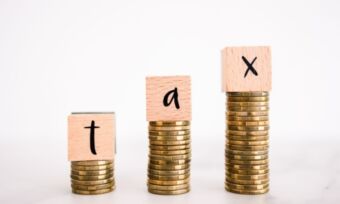How much super should I have at 30?

Your thirties could be an important time for building your retirement nest egg. But is there a particular amount of super you should have amassed by 30 to be on track?
Superannuation forms an important part of many Australians’ retirement income, along with the Age Pension. Even if retirement seems like a far-off destination, it’s a good idea to check if your current balance is where it needs to be.
How much super do you need to retire?
This is a tricky question to answer because it will really depend on your personal circumstances, such as whether you own a home, the size of your savings, whether you expect to have any big costs in retirement, whether you are eligible for the Age Pension and what lifestyle you want to live.
To give you an indicative dollar figure, the Association of Superannuation Funds of Australia (ASFA) says singles need $545,000 and couples need a combined $640,000 in superannuation when they retire to fund a “comfortable” lifestyle. This assumes you use money from your savings and investments and are eligible to receive a part Age Pension, which you can access at age 66 currently (increasing to 67 by mid 2023).
A comfortable retirement allows you to be involved in a broad range of leisure and recreational activities and to buy things like private health insurance, a reasonable car and electronics, and go on domestic and occasional international holidays.
It’s compared to a “modest retirement”, which requires singles and couples alike to have $70,000 in superannuation and access to the Age Pension. A modest retirement lifestyle is better than the Age Pension, but you can only afford basic activities, ASFA says. Both budgets also assume you own your home outright and are relatively healthy.
How much super should you have at 30?
To fund a comfortable retirement, ASFA projects you will need $54,000 in superannuation when you are 30 years old. This assumes you retire at 67 years old, you draw down all your capital at retirement and are eligible to receive a part Age Pension.
← Mobile/tablet users, scroll sideways to view full table →
| Age | Super balance required today for a comfortable retirement |
|---|---|
| 30 years old | $54,000 |
| 31 years old | $61,000 |
| 32 years old | $68,000 |
| 33 years old | $76,000 |
| 34 years old | $85,000 |
| 35 years old | $93,000 |
| 36 years old | $102,000 |
| 37 years old | $112,000 |
| 38 years old | $122,000 |
| 39 years old | $132,000 |
Source: Based on ASFA’s Super Balance Detective calculator for a person turning the age specified in 2021. Comfortable retirement assumes an ASFA Comfortable Standard balance of $545,000 (in today’s dollars) by age 67. ASFA assumes future pre-tax wage income of around $65,000 and that upon retirement the retiree draws down all their capital and receives a part Age Pension. Other assumptions include: Investment returns (nominal), before investment fees and taxes are 6.7%, investment fees are 0.7% of assets, the tax rate is 4.5%, administration fees are $100 per annum and insurance premiums are $100 per annum. The reported required balances are intended for illustrative purposes only.
These figures assume you are eligible to receive a part Age Pension. At the time of writing, the maximum Age Pension is currently $868.30 a fortnight or $22,575.80 a year for singles, and $1,309.00 a fortnight or $34,034 a year for couples (not including any supplements).
How much you can receive will depend on your income and assets, and for couples, the rate varies if you are apart due to ill health.
→ Read more: Age Pension rates: How much is it and how does it work?
How much does the average 30-year-old have?
The average 30-year-old Australian male has $27,182 in superannuation, while the average 30-year-old female has $22,850, according to data from the latest APRA Annual Superannuation Bulletin. This means there’s a significant shortfall between the amount Australians have in their super accounts versus what ASFA projects they need to retire comfortably.
How can you boost you super?
If your super balance isn’t as high as you’d like, there are some steps you can take:
- Consolidate your accounts: if you have multiple super accounts, you could consider consolidating them into one. This can help you save on fees; however, check with your funds first to see what impact this could have, as it may not be suited to everyone.
- Salary sacrifice: this is an arrangement where some of your pre-tax salary or wages are paid into your super account. This may have some tax benefits.
- Making additional contributions: you can make both concessional contributions (from your pre-tax pay) and non-concessional contributions (from your after-tax pay) to your super. Be aware of the limits that apply and tax implications.
- Doing a super health check: check your fund’s performance and fees, evaluate your investment options and check your insurance cover. You might like to compare super funds with Canstar.
It’s also worth checking if you are eligible for the low income super tax offset or government co-contributions. If you have a spouse, you could also consider super splitting.
If you need help with your super, you may want to contact your super fund or speak to a financial adviser.
Compare Superannuation with Canstar
The table below displays some of the superannuation funds currently available on Canstar’s database for Australians aged 30 to 39 with a super balance of up to $55,000. The results shown are sorted by Star Rating (highest to lowest) and then by 5 year return (highest to lowest). Performance figures shown reflect net investment performance, i.e. net of investment tax, investment management fees and the applicable administration fees based on an account balance of $50,000. To learn more about performance information, click here. Consider the Target Market Determination (TMD) before making a purchase decision. Contact the product issuer directly for a copy of the TMD. Use Canstar’s superannuation comparison selector to view a wider range of super funds. Canstar may earn a fee for referrals.
 Online rollover
Online rollover
 Online application
Online application
 Online rollover
Online rollover
 Online application
Online application
 Online rollover
Online rollover
 Online application
Online application
 Online rollover
Online rollover
 Online application
Online application
- Performance, fee and other information displayed in the table has been updated from time to time since the rating date and may not reflect the products as rated.
- The performance and fee information shown in the table is for the investment option used by Canstar in rating of the superannuation product.
- Performance information shown is for the historical periods up to 31/05/2024 and investment options noted in the table information.
- Performance figures shown reflect net investment performance, i.e. net of investment tax, investment management fees and the applicable administration fees based on an account balance of $50,000. To learn more about performance information, click here.
- Performance data may not be available for some products. This is indicated in the tables by a note referring the user to the product provider, or by no performance information being shown.
- Please note that all information about performance returns is historical. Past performance should not be relied upon as an indicator of future performance; unit prices and the value of your investment may fall as well as rise.
- Any advice on this page is general and has not taken into account your objectives, financial situation or needs. Consider whether this general financial advice is right for your personal circumstances. You may need financial advice from a qualified adviser. Canstar is not providing a recommendation for your individual circumstances. See our Detailed Disclosure.
- Not all superannuation funds in the market are listed, and the list above may not include all features relevant to you. Canstar is not providing a recommendation for your individual circumstances.
- Canstar may earn a fee for referrals from its website tables, and from Sponsorship or Promotion of certain products. Fees payable by product providers for referrals and Sponsorship or Promotion may vary between providers, website position, and revenue model. Sponsorship or Promotion fees may be higher than referral fees. Sponsored or Promotion products are clearly disclosed as such on website pages. They may appear in a number of areas of the website such as in comparison tables, on hub pages and in articles. Sponsored or Promotion products may be displayed in a fixed position in a table, regardless of the product’s rating, price or other attributes. The table position of a Sponsored or Promoted product does not indicate any ranking or rating by Canstar. For more information please see How We Get Paid.
- Click here for additional important notes and liability disclaimer.
Performance and Investment Allocation Differences
- Fee, performance and asset allocation information shown in the table above have been determined according to the investment profile in the Canstar Superannuation Star Ratings methodology.
- Some providers use different age groups for their investment profiles which may result in you being offered or being eligible for a different product to what is displayed in the table. See here for more details.
- Australian Retirement Trust Super Savings’ allocation of funds for investors aged 55-99 differ from Canstar’s methodology – see details here.
- The Australian Retirement Trust Super Savings (formerly Sunsuper for Life) product may appear in the table multiple times. While you will not be offered any single investment option, this is to take into account the different combinations of investment options Australian Retirement Trust may apply to your account based on your age. For more detail in relation to the Australian Retirement Trust (formerly SunSuper for Life) product please refer to the PDS issued by Australian Retirement Trust for this product.
- Investment profiles applied initially may change over time in line with an investor’s age. See the provider’s Product Disclosure Statement and TMD and in particular applicable age groups for more information about how providers determine their investment profiles.
Cover image source: Jacob Lund/Shutterstock.com
This article was reviewed by our Sub Editor Jacqueline Belesky and Finance and Lifestyle Editor (former) Shay Waraker before it was updated, as part of our fact-checking process.

Try our Superannuation comparison tool to instantly compare Canstar expert rated options.






